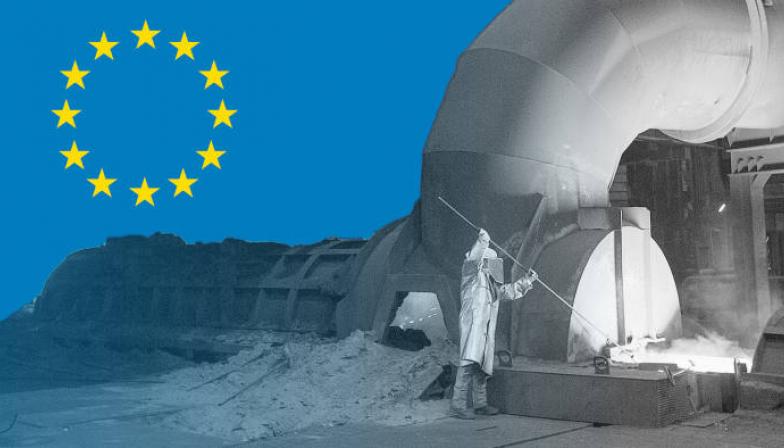Currently, coal is used almost exclusively for the production of steel to remove oxygen from iron ore. But this is exactly what creates a gigantic amount of CO2 at the end of the process chain.
Hydrogen instead of carbon
It has long been known that in metal processing, the role of carbon in steel production can also be shifted to hydrogen. Then, at the end of the process chain, there will no longer be CO2, but rather harmless water, H2O. This is the path Salzgitter (Salzgitter) takes.
“We aim to get rid of carbon in our processes and, thus, directly avoid CO2 emissions,” says Volker Hille. "It sets us apart from other approaches."
The model Salzgitter prefers is a new combination of technology that already exists in principle. The only real addition that should come into play is natural gas.
There are several regions of the world where natural gas is cheaper than coal. “Natural gas is essentially methane (CH4) with hydrogen associated with it,” explains Hille. "If you look at the chemical reactions that we need with natural gas, half the work is done with hydrogen."
Relevant industrial plants are already operating in North Africa, the Middle East, as well as in the Gulf of Mexico and in the US shale gas belt. “These plants running on natural gas can also use hydrogen according to our technology,” and work with any ratio of natural gas.
Natural gas as a bridge
By simply switching to gas, large quantities of CO2 can be avoided in Germany. The reduction potential for emissions will be more than 60% compared to today if modified smelters are used exclusively on natural gas. When using a combination of half natural gas and half hydrogen, the reduction will be about 80%. By relying solely on hydrogen, CO2 emissions can be reduced by 95%.
But the transition to cleaner steel production will be expensive. And economic barriers are higher than technical ones. The cost of natural gas, hydrogen and the energy needed for climate is too high compared to today's coal. From a business point of view, investment in new process plants on an industrial scale would be justified only if they could continue to produce steel on a competitive basis.
Time is running out
Time is short. In the Paris climate agreement, the international community agreed that the rise in average global temperatures would be kept below 2 degrees Celsius above the pre-industrial level. At the same time, efforts must be made to limit the temperature increase to 1.5 degrees Celsius above the pre-industrial level, says Niklas Shinerl, an energy expert at the environmental organization Greenpeace, when asked about the desired climate goals.
Assuming that the goal is to increase the temperature by 1.5 degrees Celsius, then ultimately you will need to produce carbon neutral by 2035. Climate neutrality in 2050, to which the metallurgical company ThyssenKrupp strives, is based on an increase of 2 degrees. not according to the Paris climate agreement.
“At present, it has been observed as turning points have already been reached in some places that threaten to massively accelerate climate change,” emphasizes Shinerl, pointing out the lack of time, which he considers even more acute.
Huge additional energy needs
Steel specialist Volker Hille sees another problem in the growing energy demand with climate-friendly technologies. And this is a problem that was hardly considered by the general public, since the expansion of renewable energy sources is focused on the current size of the electricity market.
“If the chemical industry, the steel industry, the cement industry — really energy-intensive industries — are interested in decarburization,” then they need to understand that this will require “the use of a significant amount of electrical energy,” says Hille.
“If you decarbonize the European steel industry in our way, which ultimately leads to a 95% reduction in CO2 emissions, then you will need an additional 400 TWh of electricity per year. For comparison, currently only about 600 terawatt-hours are generated in Germany. These figures give an idea of ??what we will face in the future. ”



